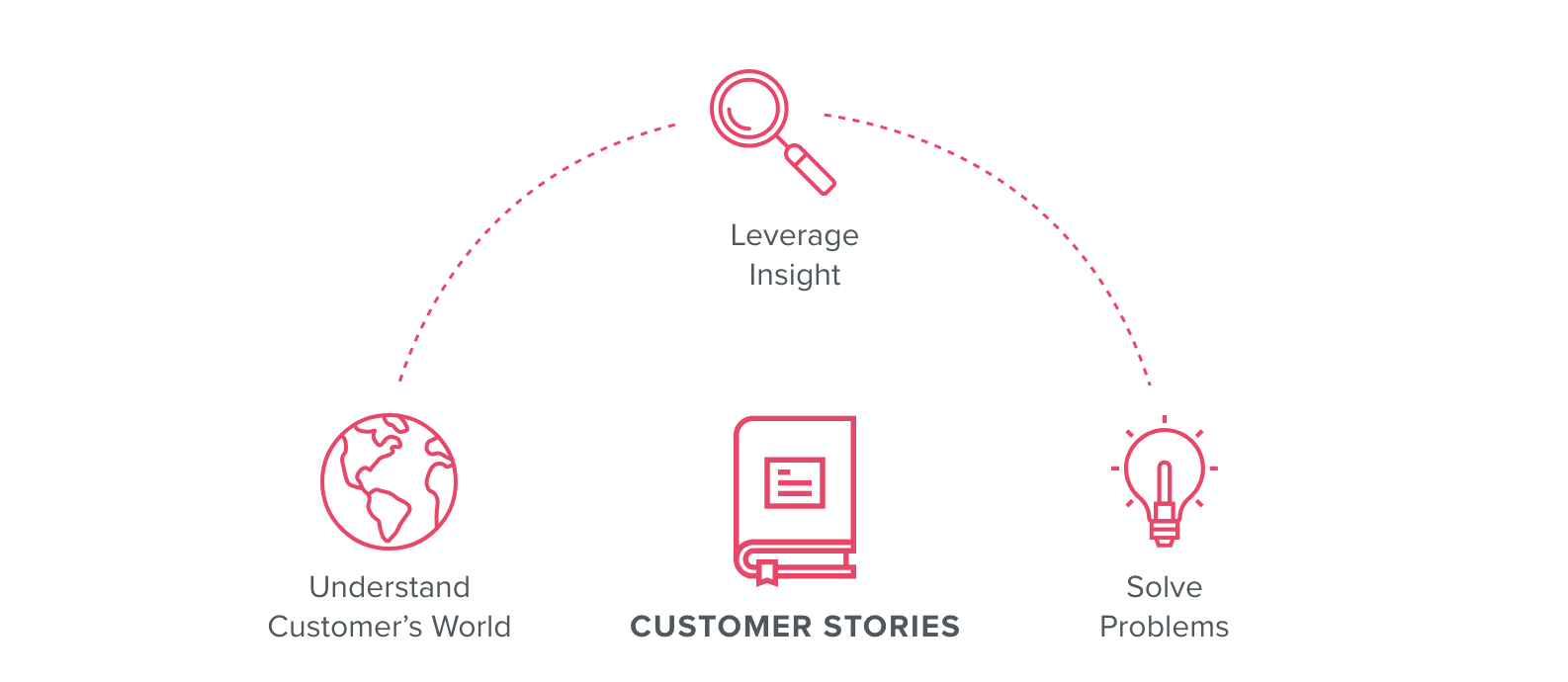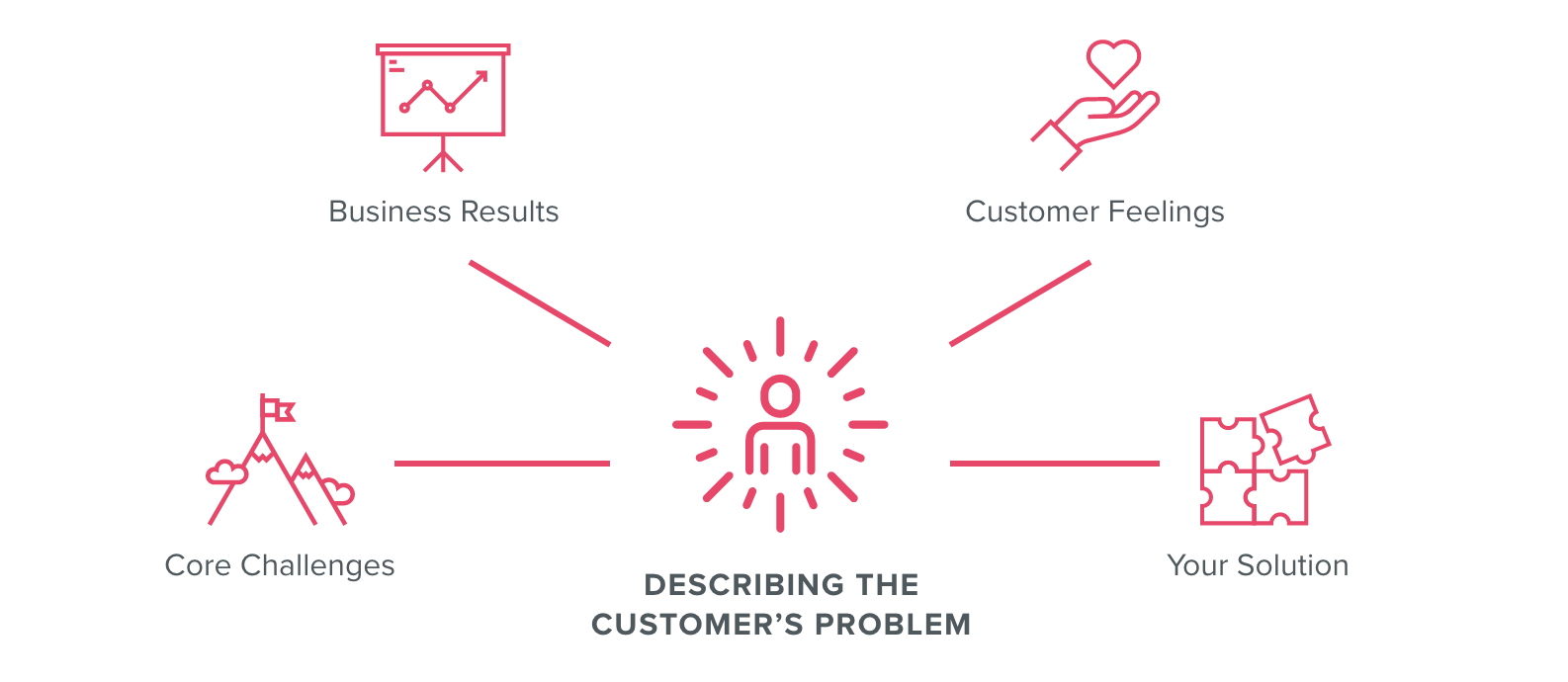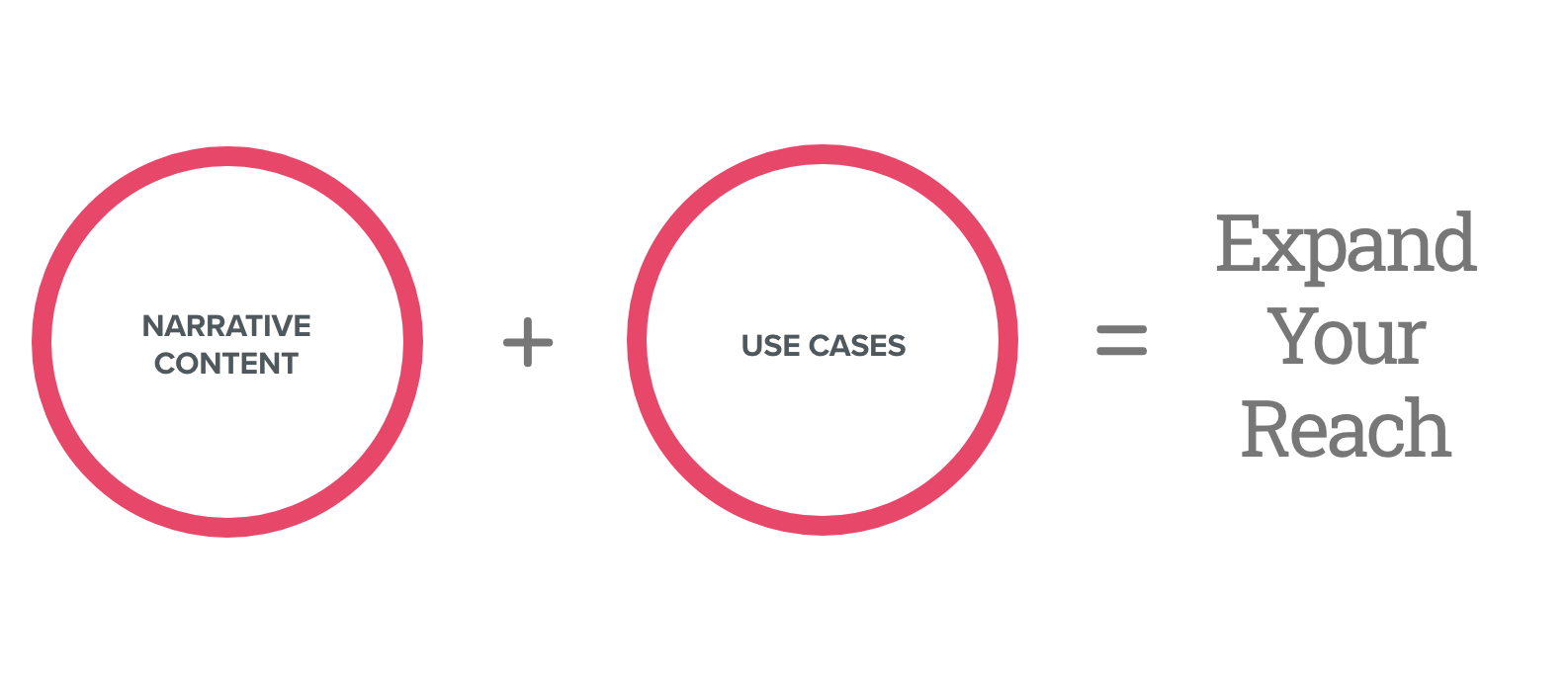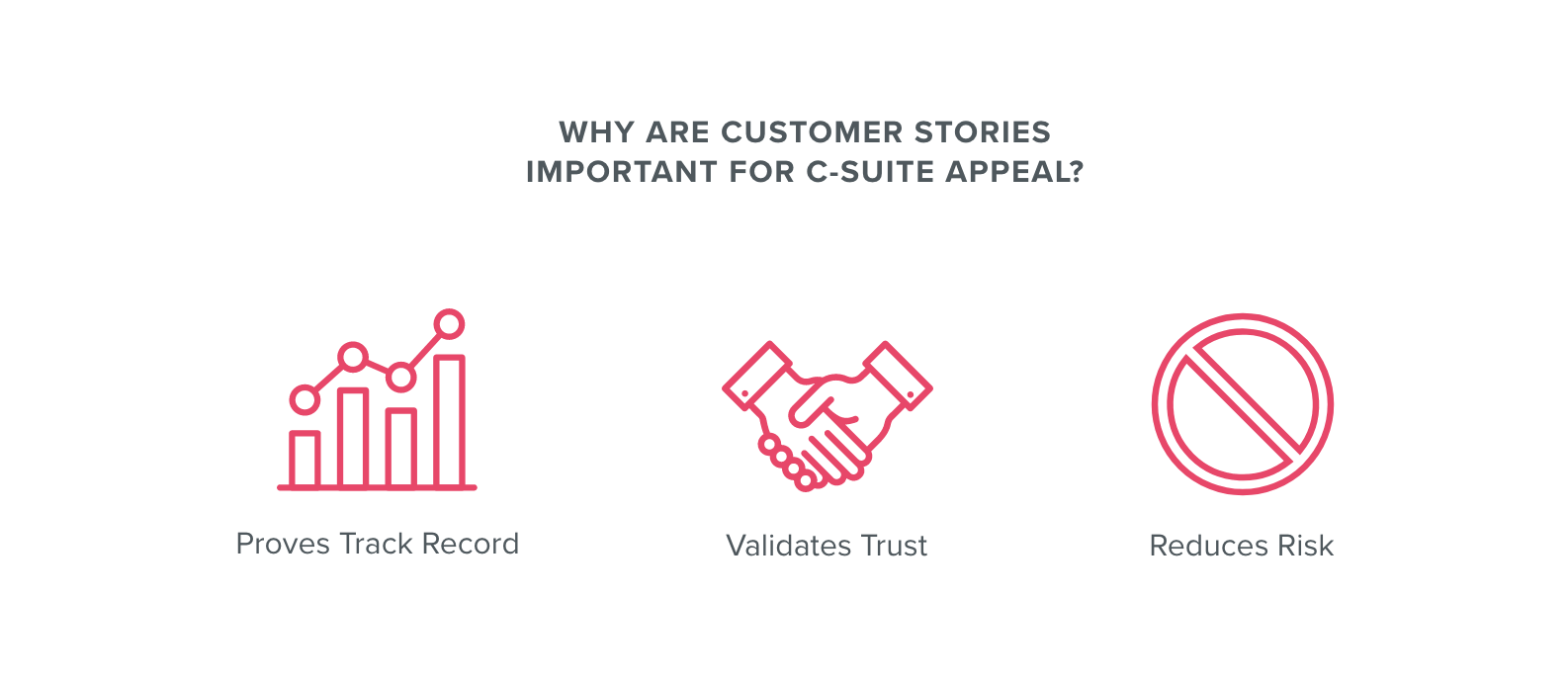Executives want to be sure they’re going to spend money in the right place, and that whatever they’re getting, whether it’s a product or solution, has a proven track record.
For your customers, buying a technology solution is so much more complicated than dropping an item into an ecommerce shopping cart; it takes months of analysis and research and discussion among multiple stakeholders. And for as much data and rationale that goes into the selection process, the decision often comes down to: Is this a good fit?
Customer Stories Nurture Compatible Prospects
Website content like customer stories and case studies help cement that compatibility. They demonstrate that you deeply understand your prospective customer’s world and their pain points—more important, that you can leverage that insight and experience to solve their problems. The prospect feels comfortable buying from you because she knows you’ve done this work before.
Essential though it is, that list of features and benefits on your website isn’t engaging enough alone to move a prospect farther along in the sales funnel. Stories that show how you’ve helped real customers attract site visitors in the discovery stage and build trust as they step closer to a decision.

Your Client Logos Aren’t Enough
Yes, prospects want to see who you’ve worked for, and a gallery of corporate logos gives that information at a glance. And testimonials on the homepage demonstrate your big client wins. But once a prospect shifts into the decision-making phase, logos and juicy quotes are not enough. Potential customers want to know what you did for the companies you’ve partnered with, what problems you solved for them.
Marketers in the B2B space need to leverage the concept of social proof — to make big decisions we human beings need to see that other people, people we respect or know or resemble us, are making similar decisions. Case studies offer social proof to your prospects.
Show Your Work
Storytelling is a hot marketing technique for consumer brands, but it equally applies in the B2B realm. You need to move beyond talking about your products and services, and all their great features and benefits. Customer stories offer the prospect validation that those attributes deliver real business results.
Every case study in your marketing portfolio should describe the customer’s problem, their starting pain point. What were their core challenges, how did those show up in business results? What were they feeling? Describe your solution and emphasize how it resolved those challenges and helped your customers sleep at night.

Case Studies Can Expand Your Reach
Case studies and customer stories can help you reach deeper into an industry — or expand beyond your current niche into a new category. If you aspire to penetrate into a vertical, then it’s essential to show how your solutions meet customer needs throughout that market. In healthcare, for example, you might include stories about how you’ve served the market from small clinical practices to a major hospital network.
Narrative content can also demonstrate how your offering plays across markets. One of our clients, for example, had a product that could work in various situations where communication is very difficult. They built case studies to showcase how the product could work in hospitality, government, and industrial — expanding well beyond their original healthcare market.
If you aim to expand into a new sector — or if you’ve launched a new product and don’t yet have customers — consider authoring use cases that show how your product or solution could potentially solve business problems in a certain industry.

Use Content to Direct the Customer Journey
Customer-focused content is an essential tool in your efforts to guide the customer from investigation to consideration to sale. Think of this not just in terms of your website — how you guide a visitor from the homepage deeper into the site — and also the broader customer relationship.
Rather than burying your case studies on an interior page, highlight them on the homepage. They should be featured on product and solution pages, cross-linked from multiple sections of the site via teasers or pull quotes. Detailed case studies may also make sense as gated content that the visitor accesses in exchange for some kind of information that captures leads and feeds your CRM.
Appeal to the C-Suite
Case studies appeal most to top decision-makers, not to those who are in the trenches using your product. For those end users, your features and benefits and product demos will be essential – but those are the baseline of the decision-making process; if your solution doesn’t match their needs, they’ll move on to another option.
But if you’re in competition with an alternative, customer stories will tip the decision. Lists of prospective providers are already vetted by the time they reach the C-Suite, and the CMO likely isn’t a power user of the tool, so she’ll be looking at something else for validation. Executives want to be sure they’re going to spend money in the right place, and that whatever they’re getting, whether it’s a product or solution, has a proven track record. Case studies that prove the product’s real-world application reduces the risk of making the wrong choice.

You Probably Have a Lot of This Content Already
Here’s the good news: Often, when we consult with a client on a website redesign, we discover how much content they actually have. Typically, it’s buried deep on the site or they’re just not leveraging it very well. They may have a library of case studies that aren’t cross-linked from other pages, making it difficult for prospects to access them.
We help clients assess what they already have to work with and identify new content needs. Then we build a strategy in which all roads lead to a set of compelling case studies that can convince prospects and close the sale. The goal is to leverage content to remove that last barrier to ‘yes.’






